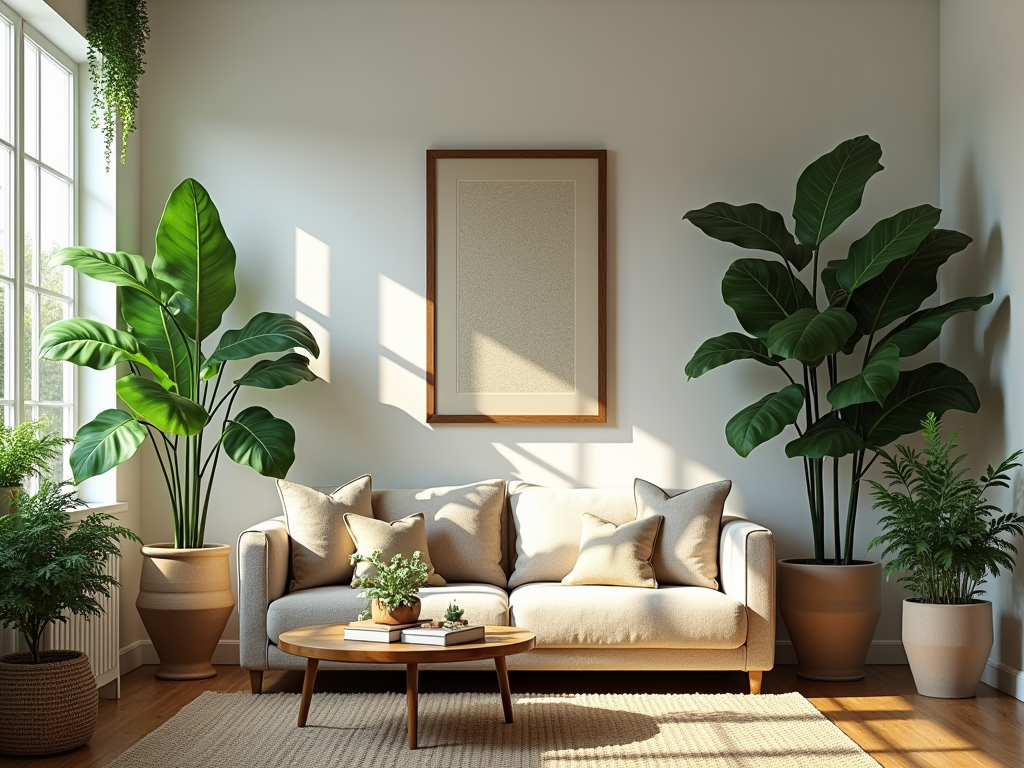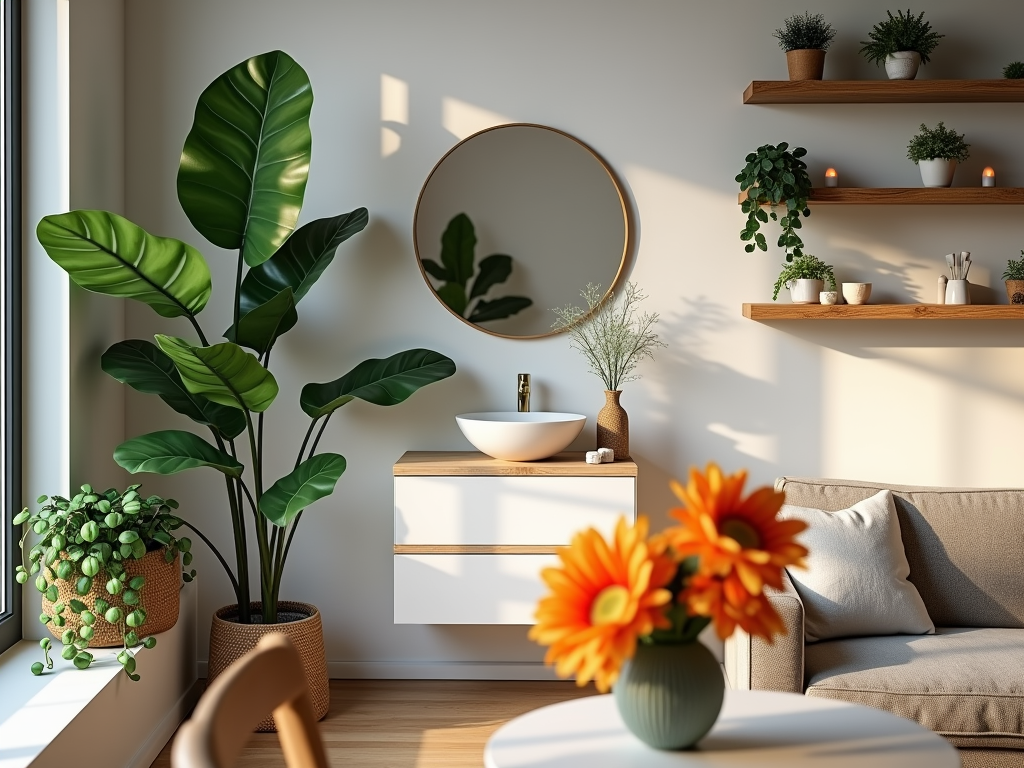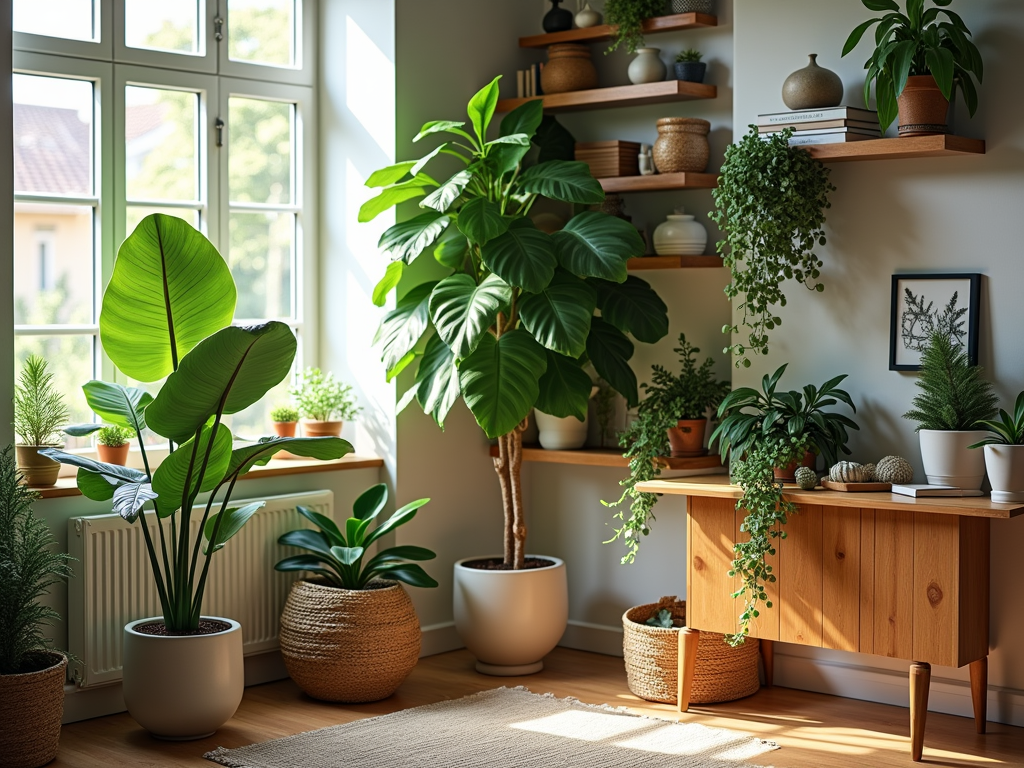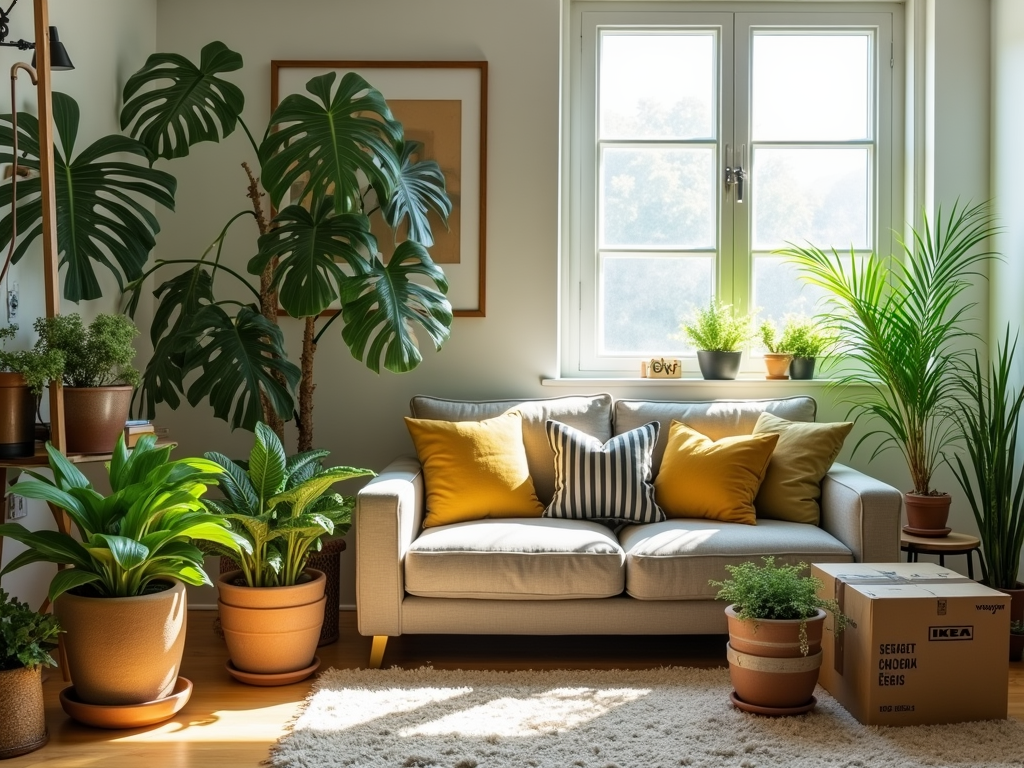
Fake plants add charm and practicality to your home, offering greenery that remains vibrant without ongoing care or specific lighting needs. They mimic the appearance of live plants without the upkeep, but they fall short of providing natural benefits like air purification. Regular dusting keeps them looking fresh.
Key Takeaways
- Perfect for those with a packed schedule or rooms lacking sufficient natural light.
- Over time, they save money since they don’t need fertilizers, soil, or maintenance tools.
- Great for pet owners or individuals with allergies, as they don’t shed pollen or house harmful toxins.
- They won’t clean the air and may lose color if exposed to strong sunlight for long periods.
- Choosing high-quality options can boost realism while enhancing your interior design.
Why Fake Plants Might Be the Perfect Addition to Your Home
I’ve found fake plants to be an ideal choice for keeping a space looking vibrant without the extra hassle. They don’t need sunlight, watering, or constant care, making them perfect if you’re always on the go or simply don’t want to bother with upkeep. Plus, they stay perpetually lush no matter where you place them—whether it’s a dark corner or a bathroom with no windows.
Another reason I prefer fake plants is their cost-effectiveness. Sure, a real plant might seem inexpensive upfront, but when you factor in soil, fertilizer, and regular upkeep, costs add up over time. One fake plant is a one-time purchase, sparing you those ongoing expenses. Over the course of a year (or longer), that savings really makes a difference.
Safety is another big win. If you’ve got pets or kids, fake plants offer peace of mind. Many real plants, like lilies and pothos, are toxic to animals. Swapping these for fake versions lets you keep the beauty while ensuring your home stays safe. Hypoallergenic? That’s another advantage since fake plants don’t produce pollen, making them a great alternative for anyone who struggles with seasonal allergies.
The variety available is impressive too. From towering fiddle-leaf figs to compact succulents, there’s something that fits every space and aesthetic. If you need tips on how to make the most of them, check out my advice on decorating with faux plants.

Fake plants can be a beautiful addition to your space, but they come with some drawbacks. First, they don’t contribute to air quality the way real plants do. Studies like NASA’s Clean Air Study have shown that real plants filter indoor air pollutants. That fresh, natural benefit just isn’t there with artificial greenery.
Another issue is dust. Fake plants often collect it quickly, meaning you’ll need to clean them regularly to keep them looking fresh. A wipe with a damp cloth or gentle rinsing does the trick, but it’s something you’ll need to stay on top of. If you’re curious about proper care, I dive into it further in this guide on how to clean faux plants.
Over time, fake plants exposed to direct sunlight tend to fade, which can leave them looking less vibrant. If you want yours to last for years, it’s smart to keep them out of harsh sunlit areas. And here’s the thing—cheap, poorly-made options can be a dead giveaway they aren’t real. I always recommend investing in high-quality designs with realistic textures and colors.
That lack of scent and natural growth is another factor. Real plants grow and change, offering dynamic energy to your space, while fake ones stay static unless you refresh their arrangement. High-quality faux greenery can still make a big statement but won’t fully replicate that living, breathing effect.
How Fake and Real Plants Stack Up Against Each Other
Real plants shine by naturally purifying the air and adding a vibrant, living energy to any room. They can also be rewarding, offering psychological perks as you care for them. However, real plants demand effort—regular watering, sunlight, and even fertilizers. If you’ve got pets or allergies to worry about, real plants can sometimes cause complications depending on the species.
Fake plants, on the other hand, are simpler to manage. They remove the pressure of keeping something alive and won’t trigger allergies or harm curious pets. Plus, they save money and time over their lifespan. But, plastic options come with environmental downsides since their manufacturing relies on fossil fuels. Unlike real plants, fake ones aren’t biodegradable.
To find more ideas on how to incorporate these low-maintenance choices into your home, check out this simple guide on how to decorate with faux plants.
Making Fake Plants Look Fabulous in Your Space
Choosing fake plants that look lifelike starts with selecting ones made from high-quality materials. Focus on details like realistic veins on the leaves, natural textures, and subtle variations in color. Brands like Pottery Barn and West Elm create options that feel surprisingly authentic—perfect for elevating your home’s aesthetic.
Styling fake plants is where the fun happens. Pair them with pots that match the vibe of the room, whether that’s sleek ceramic for modern spaces or woven baskets for a cozy touch. Changing up their height adds visual interest, too. Use taller leafy plants for empty corners, while small succulents work great on desks or nightstands. For a bookshelf, drape a faux trailing vine to soften the edges and bring in a lush vibe.
Tips for Seamlessly Blending Fake Plants with Your Décor
- Use a mix of faux plants with varying textures, like combining ferns with palms or succulents.
- Cluster multiple plants of different heights on a plant stand for a curated look.
- Place them near a source of natural light to mimic real plants, even if they don’t need it.
For those who aren’t sure where to start, I’ve found some helpful tips on how to decorate with faux plants. It’s much easier to create something fresh and cohesive when you see how others do it convincingly!

Get Crafty with DIY Fake Plant Ideas
Adding a personal twist to fake plants can make them feel unique and purposeful in your space. I love creating custom arrangements or reusing old artificial greenery for fresh new decor projects. It’s easier than it sounds with a few must-have materials like floral wire, a glue gun, and your favorite decorative pots.
Create a Hanging Basket Arrangement
A hanging basket brings charm to any room. Start by choosing a basket that fits your style—woven rattan or sleek metal both work well. Fill the basket with foam or moss to anchor the stems. Use floral wire to secure your fake plants, layering different textures like faux vines, ivy, or even blossoms for a fuller look.
Repurpose Old Greenery
Turn unused artificial plants into wreaths or stunning centerpieces. Snip greenery into smaller pieces and use a hot glue gun to attach them to wreath frames. Circular or asymmetrical designs work beautifully, and they’re practical for holidays or everyday decor.
Finding the Best Places to Buy Fake Plants
I like starting with well-known retailers like Amazon, IKEA, Wayfair, Walmart, and Etsy since they have something for everyone. Amazon usually beats others on competitive pricing and variety, especially if you’re on a tighter budget. For unique, handmade designs, I’d recommend checking out Etsy. It’s a great spot if you’re after something that feels one-of-a-kind.
If you prefer hands-on shopping, IKEA and Walmart give you the chance to see the plants’ texture and color in person. Their displays make it easy to imagine how a plant will look in your space. Local nurseries and décor shops are worth exploring too, especially for higher-quality options or if you want advice on styling.
Before buying, I always compare prices across platforms and check return policies. Online shopping is convenient, but with artificial plants, nothing beats seeing some options up close in a traditional store.

Sources:
Better Homes & Gardens
The Spruce
Ambius
UF/IFAS Extension
Good Housekeeping
Wikipedia
Etsy
Amazon
